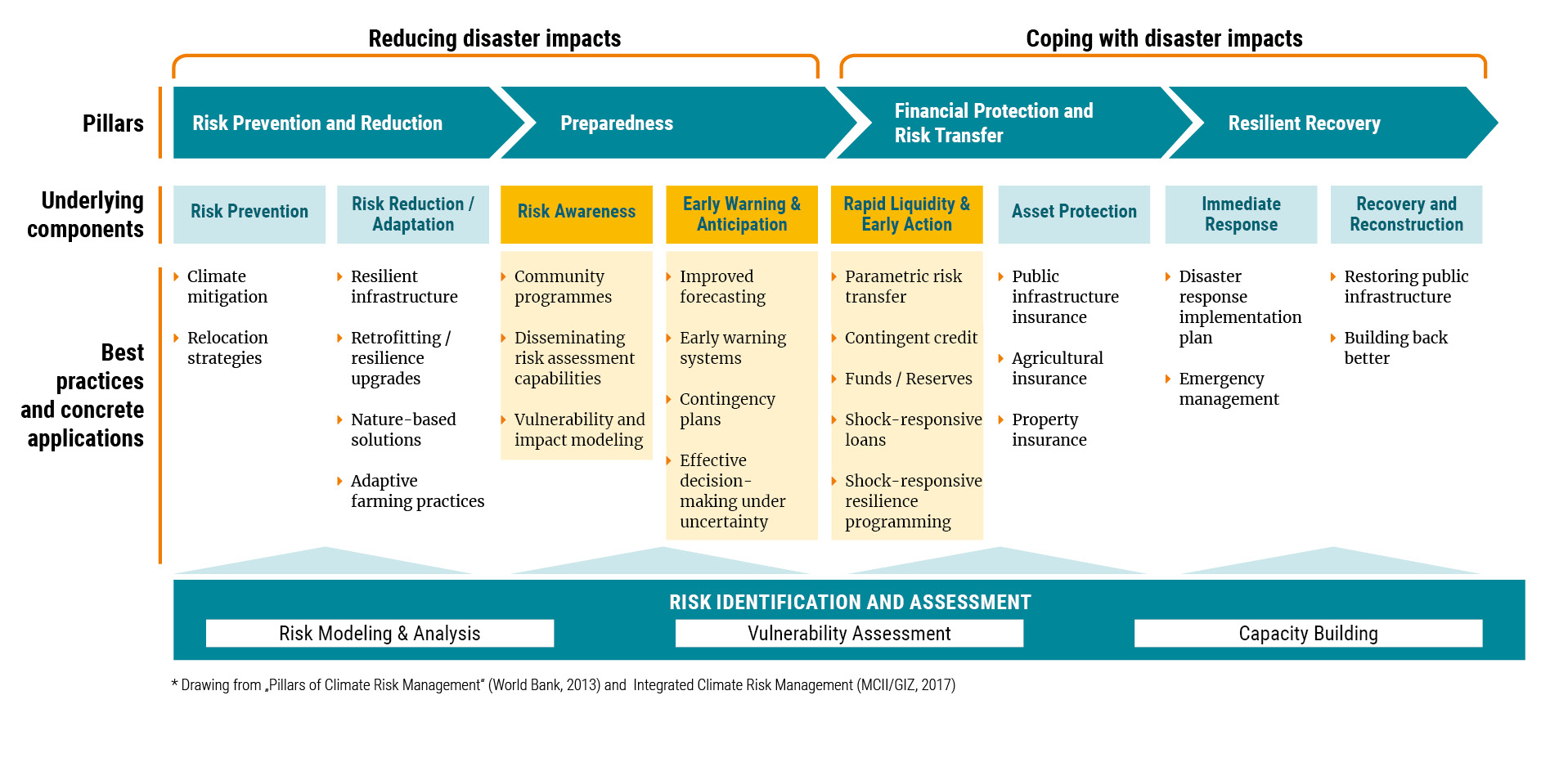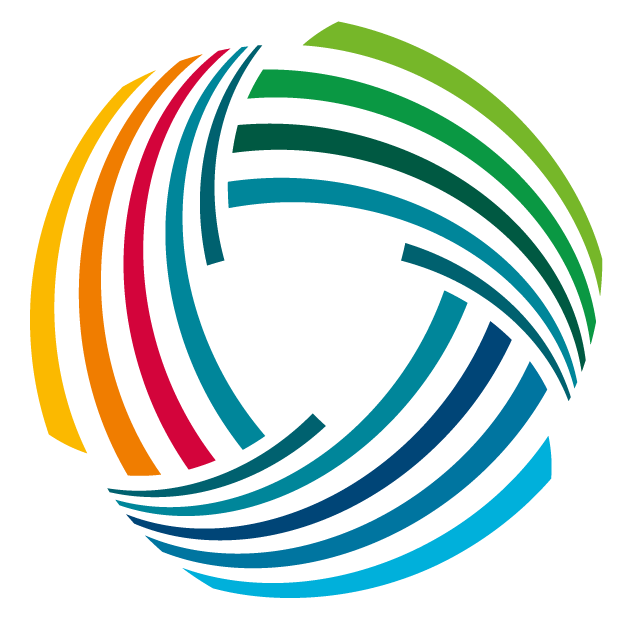Workstream 2: Action & Implementation
Enable effective action and implementation of high-quality Climate and Disaster Risk Finance and Insurance solutions in poor and vulnerable countries
Global Risk Financing Facility - Sierra Leone
Strengthening the effectiveness of adaptive social protection
by the world bank group
In Sierra Leone, the Global Risk Financing Facility (GRiF) awarded a USD 2.5 million grant in June 2019 to co-finance a USD 30 million International Development Association (IDA) operation to build the systems and technical capacity needed to establish and scale up the national safety net for more rapid response to natural disasters and crises, including health emergencies. These measures are intended to increase the financial resilience of extremely poor households in Sierra Leone to disaster shocks. The grant supports the operating and institutional arrangements for the scale-up, the design of the triggers that signal an emergency and the build-out of the appropriate delivery systems, including prearranged contracts for payment and service delivery.
Country Background
Sierra Leone has experienced strong economic growth over the past decade. However, more than half of the population remains poor and the economy continues to be fragile after more than a decade of civil conflict and recent disaster events. Sierra Leone is vulnerable to natural disasters, including floods, landslides, and drought. It also experiences a variety of different health-related shocks such as epidemics. In 2017, the country was impacted by one of the worst recorded natural disasters in its history when flooding led to a massive landslide, affecting over 6,000 people, 1,141 of whom were declared dead or missing. The country saw similar losses from the Ebola Virus Outbreak in 2014, which caused more than 14,000 cases and nearly 4,000 deaths.
As a country with 56.8% of the population below the national poverty line (as of 2018)¹, responding to emergencies imposes financial costs that the country’s budget cannot cover, and fiscal constraints that are already rather high in normal times. As a result, Sierra Leone largely relies on humanitarian assistance to finance costs associated with such events.
In 2013, the Government of Sierra Leone established a national safety net system to reduce reliance on humanitarian assistance and provide regular cash transfers to extremely poor households. This signalled a shift in paradigm from external assistance to country ownership. Since then, the social safety net and its delivery systems have been used to channel funds to the most affected population in response to multiple shocks, including during the Ebola crisis and the 2017 landslide.
However, in each case, the post-shock safety net scale-up has been ad hoc with systems created after the event and systems that were not sustained longer term to cater to future shocks. In order to move towards an approach of predefining and systematizing a post-shock safety net scale-up, the country unlocked a grant from the GRiF to establish the building blocks for a prearranged shock-responsive safety-net system, which can be scaled up to provide much needed assistance to the poorest and most vulnerable people in the country.
¹ World Development Indicators.
Project description
GRiF awarded a USD 2.5 million grant in 2019 to support the Government of Sierra Leone and enable it to invest in a prearranged shock-responsive safety net. This includes USD 1 million to help build systems and strengthen implementation of prearranged funding linked to national delivery systems, specifically by setting up the infrastructure needed to establish the institutional and governance frameworks to implement the scalability mechanism, improving the quality of existing data and filling data gaps, and identifying triggers for disbursement. USD 1 million were allocated for technical assistance to strengthen the government systems for implementing the contingent financing component and enhance the sustainability of the systems beyond the project itself, as well as to incentivize preparedness. The remaining USD 500,000 will fund technical assistance to assess the feasibility of risk-transfer solutions in the future through analytical work and capacity building. This work builds on Sierra Leone’s existing national safety-net system and is embedded in a World Bank lending project through additional finance from IDA funds, ensuring country ownership and long-term sustainability.
The World Bank project was designed to support 35,000 households and extend coverage to all sixteen districts of the country, including the capital Freetown. As part of the regular cash transfer programme, beneficiary households were envisioned to receive payments each quarter, valued at Le 250,000 (which is equivalent to USD 25). Results show that typically under the regular safety net, the higher proportion of beneficiaries who collect the payments are female – 94% compared to the end target of 70%.
To ensure that systems for shock-response are linked to available finance for emergency cash transfers, the Government held USD 4 million from the World Bank’s USD 30 million social protection project for release as emergency cash transfers in response to natural-disaster and health shocks. By linking cash transfers for the poor with preagreed disbursement plans and channels, the intention was to ensure timely post-disaster assistance for affected populations.
Covid-19 impact and response
Although the initial focus of the project was to design systems for a potential flood shock, the project quickly shifted to support the Covid-19 response after the outbreak in Sierra Leone in April 2020. GRiF resources were used to develop a Covid-19 Emergency Response Manual that defined the rules governing how the social safety net would be scaled up to meet the emerging needs, and adapt the existing systems to target and enrol cash transfer to beneficiaries who were not in the existing registry.
In line with the Emergency Response Manual, USD 4 million contingency financing was released in June 2020 as soon as the shock-responsive systems were in place. Within three months, emergency cash transfers were being channelled to around 29,000 vulnerable informal sector workers and their families (an estimated 174,000 beneficiaries) in five major cities including Freetown. The transfers targeted vulnerable urban informal sector workers and their families not traditionally covered by social safety nets.
The European Union has agreed to provide an additional EUR 5 million for emergency cash transfers designed to reach 228,000 more people by the end of the calendar year, making use of the same systems that were used to channel the USD 4 million for the initial response. Moreover, the experience of delivering emergency cash transfers in response to Covid-19 will inform how the remaining GRIF-funded system-building resources will be targeted. Given the success of this initial response, the Government is interested in setting aside funds to be held as contingency in a potential upcoming project.
Watch the panel discussion during the InsuResilience Annual Partnership Forum 2020 on the lessons learned from the Tripartite Agreement and Global Risk Financing Facility in Sierra Leone: video 1 (36:23 – 50:56) video 2 (0:00 – 26:45).
Summary Table
Overview | |
|---|---|
Risk(s) to be covered | Flood, landslide, pandemic |
Product/Solution | Shock-responsive Safety Nets |
Objective | To increase the financial resilience of extremely poor households in Sierra Leone to disasters and crises by providing them with pre-financed emergency transfers |
Beneficiaries | 402,000 extremely poor people |
InsuResilience Global Partnership Members and their partner organizations/governments | GRiF project grant |
Climate and Disaster Risk Management
Placement of this project along the climate and disaster risk continuum:

